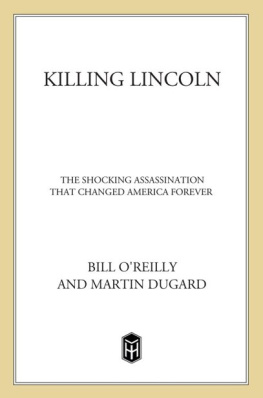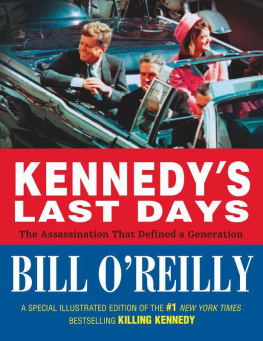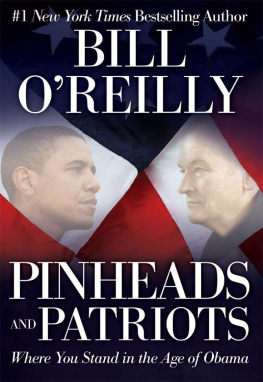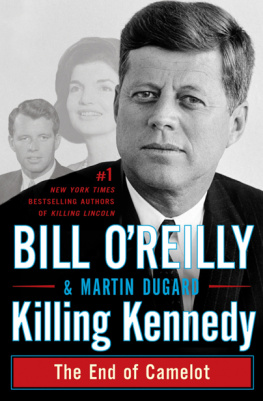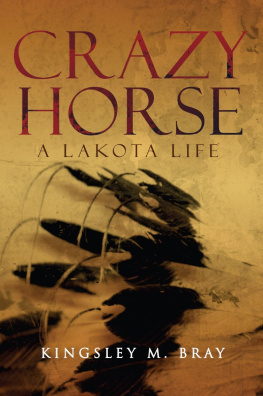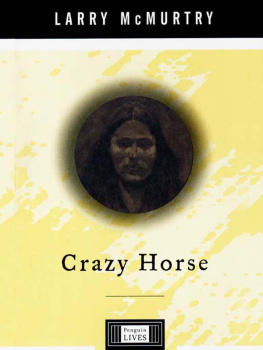Bill OReilly - Killing Crazy Horse: The Merciless Indian Wars in America
Here you can read online Bill OReilly - Killing Crazy Horse: The Merciless Indian Wars in America full text of the book (entire story) in english for free. Download pdf and epub, get meaning, cover and reviews about this ebook. year: 2020, publisher: Henry Holt and Co., genre: Detective and thriller. Description of the work, (preface) as well as reviews are available. Best literature library LitArk.com created for fans of good reading and offers a wide selection of genres:
Romance novel
Science fiction
Adventure
Detective
Science
History
Home and family
Prose
Art
Politics
Computer
Non-fiction
Religion
Business
Children
Humor
Choose a favorite category and find really read worthwhile books. Enjoy immersion in the world of imagination, feel the emotions of the characters or learn something new for yourself, make an fascinating discovery.

- Book:Killing Crazy Horse: The Merciless Indian Wars in America
- Author:
- Publisher:Henry Holt and Co.
- Genre:
- Year:2020
- Rating:3 / 5
- Favourites:Add to favourites
- Your mark:
- 60
- 1
- 2
- 3
- 4
- 5
Killing Crazy Horse: The Merciless Indian Wars in America: summary, description and annotation
We offer to read an annotation, description, summary or preface (depends on what the author of the book "Killing Crazy Horse: The Merciless Indian Wars in America" wrote himself). If you haven't found the necessary information about the book — write in the comments, we will try to find it.
Killing Crazy Horse: The Merciless Indian Wars in America — read online for free the complete book (whole text) full work
Below is the text of the book, divided by pages. System saving the place of the last page read, allows you to conveniently read the book "Killing Crazy Horse: The Merciless Indian Wars in America" online for free, without having to search again every time where you left off. Put a bookmark, and you can go to the page where you finished reading at any time.
Font size:
Interval:
Bookmark:
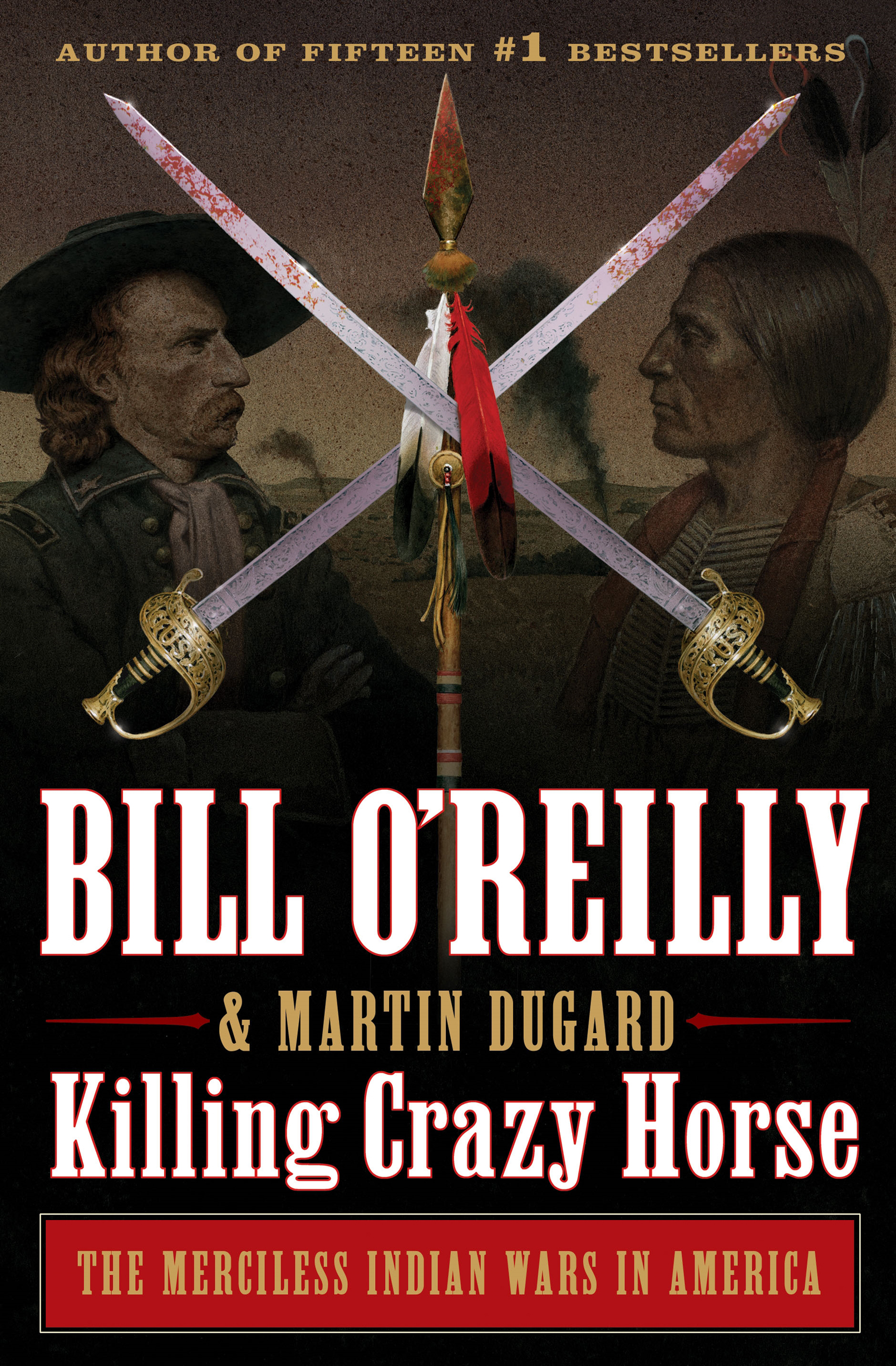

The author and publisher have provided this e-book to you for your personal use only. You may not make this e-book publicly available in any way. Copyright infringement is against the law. If you believe the copy of this e-book you are reading infringes on the authors copyright, please notify the publisher at: us.macmillanusa.com/piracy.
This book is dedicated to Makeda Wubnehmy assistant for twenty-seven years. There is no finer human being around.
Writing a book of history about Native Americans is an arduous task. There were literally thousands of tribes throughout North America, more than five hundred of which still exist. In this book, we use the terms Indians and Native Americans interchangeably, as has been done historically. We realize each tribe is unique and has its own culture. We are respectful of that and have tried to deal with it accurately.
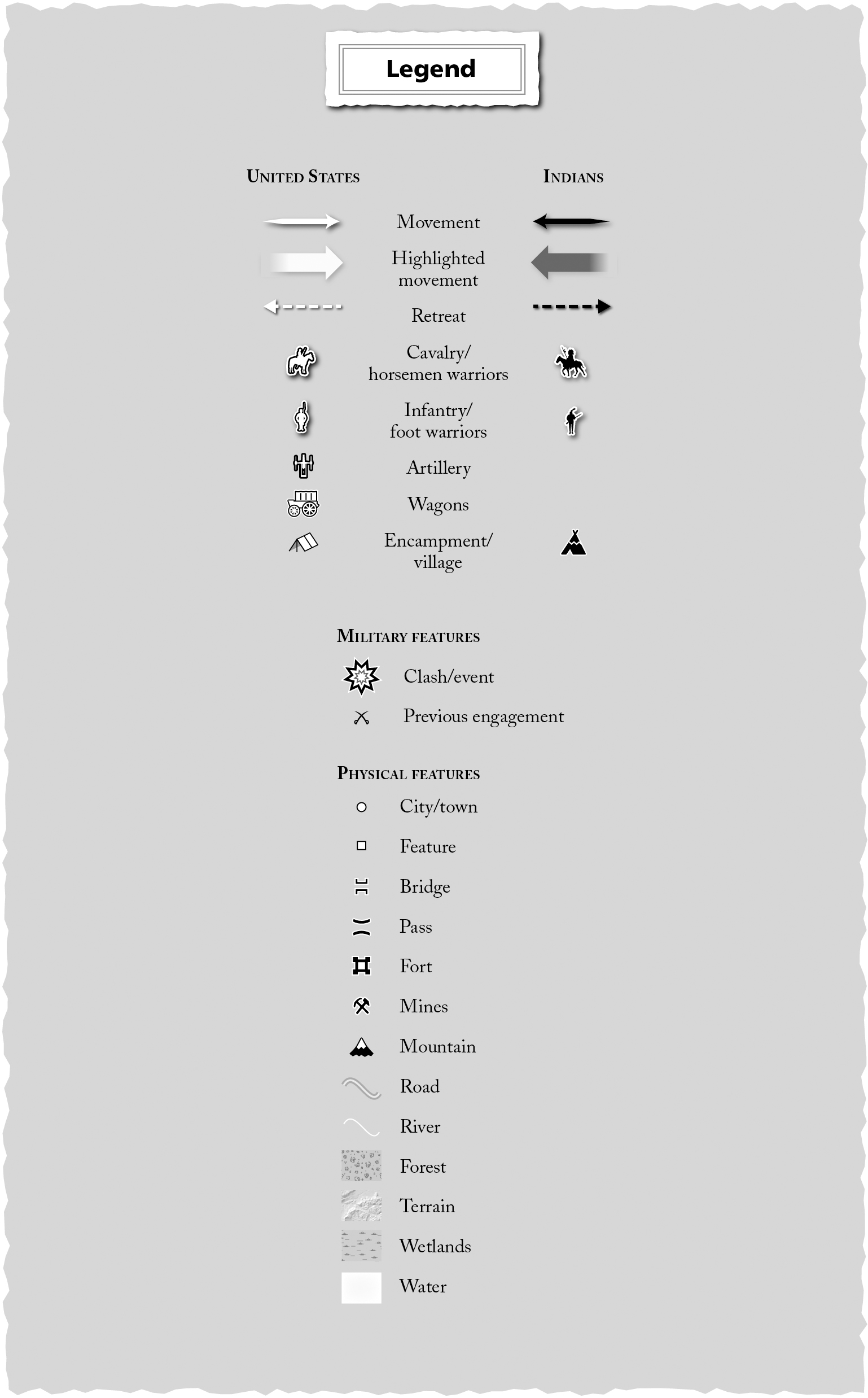
A UGUST 30, 1813
F ORT M IMS, A LABAMA
11:00 A.M.
The Creek nation is out for blood.
The red-painted bodies of hundreds of warriors are pressed into the earth, awaiting the signal to attack. These men have hidden since sunrise, intending to kill every person they can. They conceal themselves in a valley four hundred yards outside the new log walls surrounding the sprawling plantation of Samuel Mims. More than six hundred men, women, and children live inside the month-old fort located thirty-five miles north of Mobile. They are comprised of white settlers, Negro slaves, and mixed-race Indians who have adopted white ways. Almost all of them have just hours to live.
The Indian force numbers somewhere between seven hundred and a thousand. Some are not Native American at all but African slaves who have escaped and joined the Creek nation. The warriors are naked, save for a loincloth, to which a red-painted cows tail has been tied at the back. Some wear an owl feather, believing it will give them improved vision. Each warrior has forced himself to drink a strong emetic that has made him vomitagain, in the belief that this will prevent infection if he is stabbed or shot.
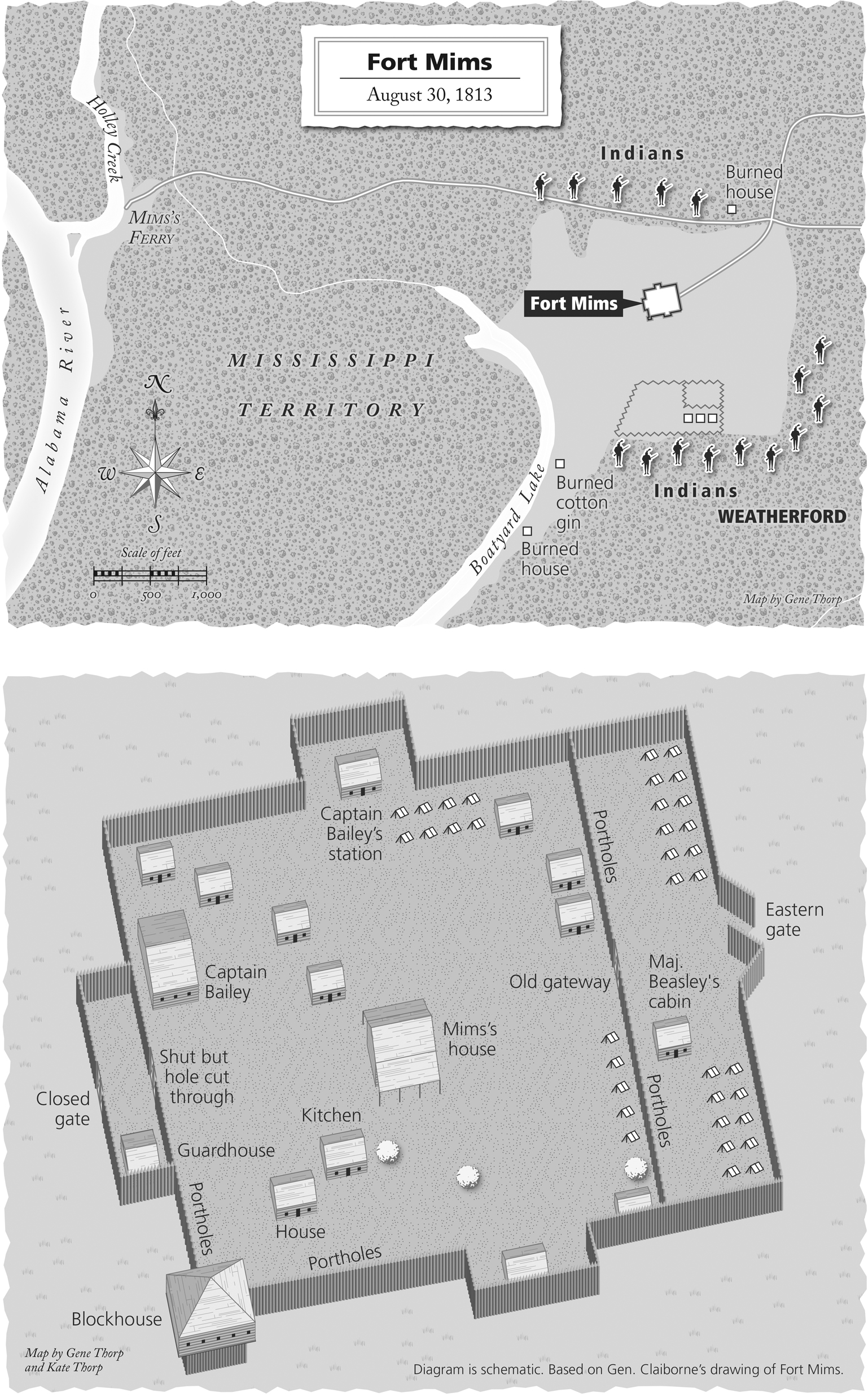
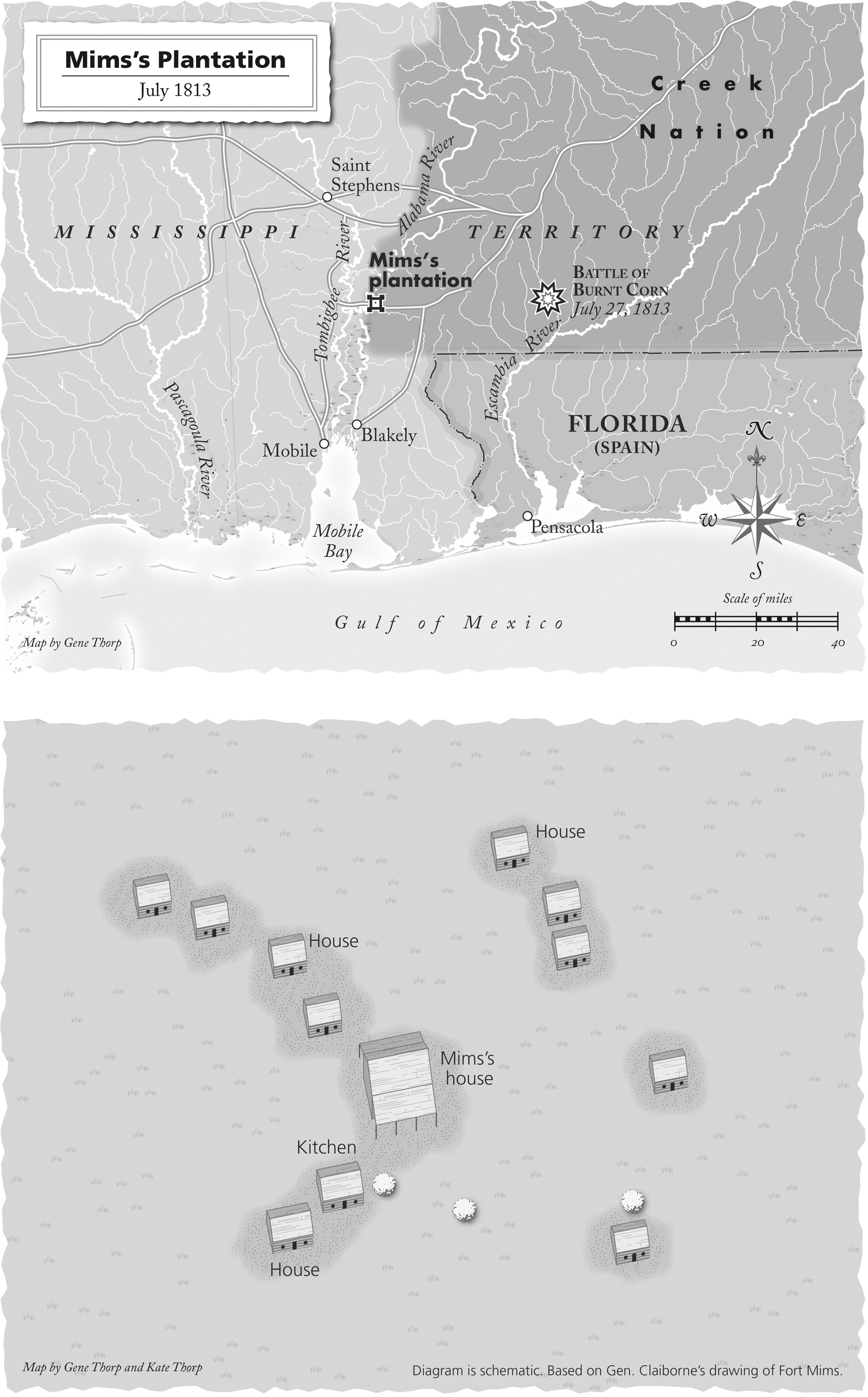
Every fighter is armed with a flintlock rifle, as well as a bow and iron-tipped arrows. Their most lethal killing weapon is a two-foot-long war stick carved from dense wood. Almost every man carries one. They have trained countless hours with these war clubs and wield their cudgels with the same finesse shown by master swordsmen. Like the Indians torsos, each club is painted red.
The Creek warriors have waited days and marched in complete stealth for miles, determined to remain unseen and attack with complete surprise. They know the precise moment at which they will attack. They have studied the routines of the fort and are aware that the settlers gather each day for a noon meal. A dinner bell is the signal to come together.
On this morning, the dinner bell will also be the signal to attack.
The Creeks struggle to remain motionless. Insects crawl over their prone bodies. Mosquitoes bite their hands and faces. Beads of sweat sting their eyes as the day grows warmer and the air more humid. The Creeks intent is murder. However, their ultimate goal is survivalfor they believe that only a mass slaughter will prevent intruders from stealing the Creek ancestral homeland.
Just one more hour until the lunch bell clangs.
Inside Fort Mims, a slave belonging to Josiah Fletcher is being tied to the whipping post. He is stripped to the waist. There is no shade here in the center of the fort, and sweat runs down the mans bare flesh. He hears the murmurs of the crowd gathering in a circle around the pole, eager to witness his suffering. The slave presses his body into the rough wood, his torso tensed to absorb one hundred lashes.
Incredibly, the slaves only crime is telling the truth. Yesterday, while working outside the walls, he saw some Creek warriors gathering in the forest. But when he raced back inside to sound a warning, the slave was accused of lying and spreading fear. In the eyes of Fort Mimss military leadership, this is a crime that must be punished.
Few men can survive a hundred lashes. The slave is sure he will die on this spot, bound helplessly to this pole.
Major Daniel Beasley of the Mississippi Volunteers holds the whip, eager to administer the lash. Beasley is forty-five and just shy of six feet tall. Women normally consider him attractive, but this morning Beasleys face is red and puffy, his eyes bloodshot. Even after a stiff drink of whiskey to start the day, Beasleys head throbs from a long night of sucking down alcohol from the fresh barrel that arrived yesterday. It is the job of the major and his 170 militiamen to protect those seeking refuge in Fort Mims. There have been rumors of Indian sightings for more than two weeks. Major Beasley and his men responded immediately in the beginning, but as day after day passed without an attack, he came to no longer consider those warnings credible. The major is so sure the slave is lying about the Indians that he has not even bothered to send his men out into the forest to investigate.
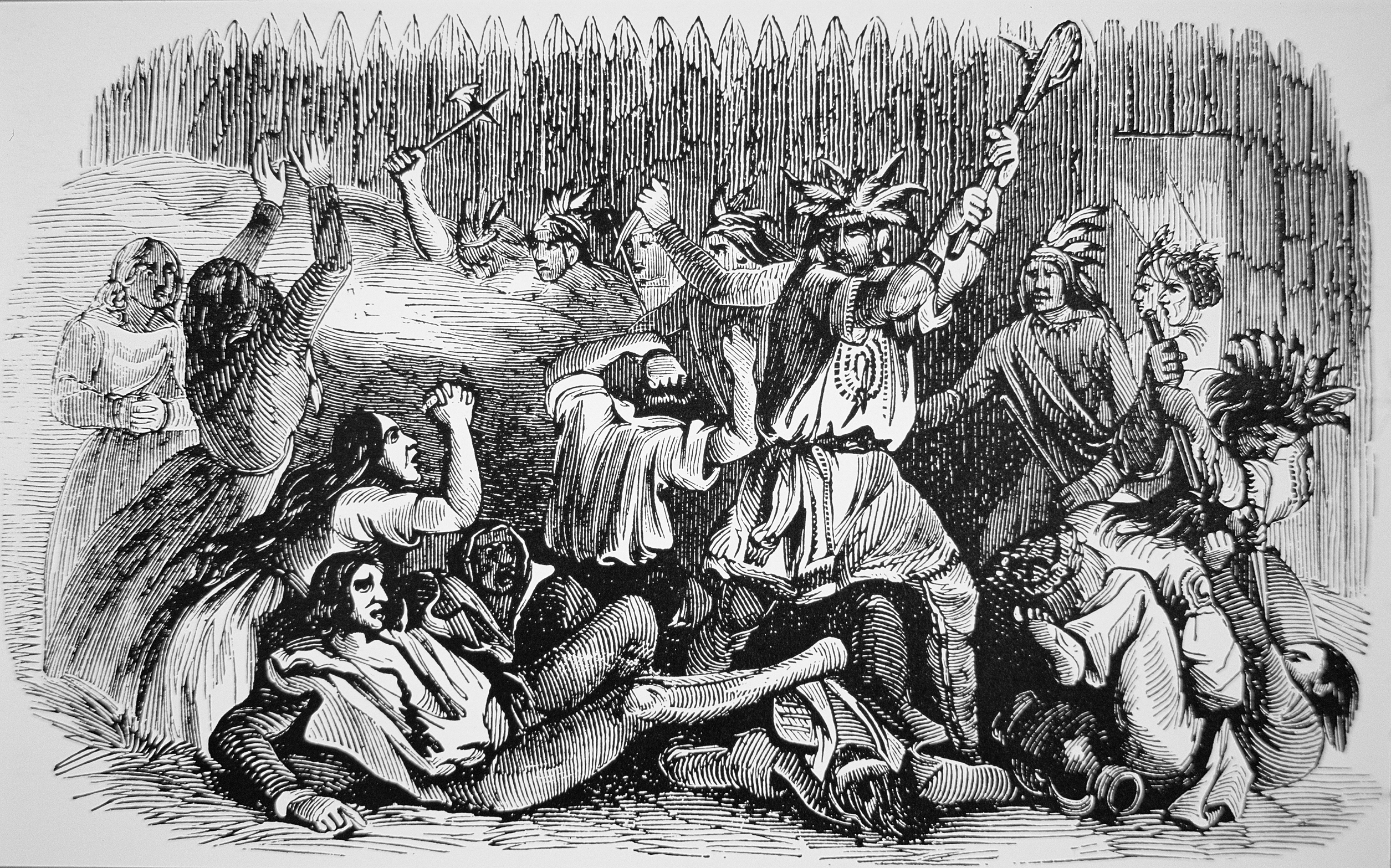
The Creek Indians massacring the inhabitants of Fort Mims, Alabama, 1813
Yet even as the young black man is bound to the post, there is evidence he is telling the truth.
Just an hour ago, a local farmer galloped his horse into the fort, also warning that Creek warriors were nearby. Jim Cornells specifically asked to speak with Major Beasley, then informed him that he had personally seen Indians in the forest.
The twenty-five-year-old Cornells is himself of mixed race, the son of a young Indian woman and a British father. His farm was recently burned to the ground by a group of Creek warriors nicknamed the Red Sticksso called for the brightly painted color of their war weapons. Cornells suffers from a disfigurement known as yaws, common to this humid climate. His condition leaves his face covered with lesions and the skin stretched back on his head, making it difficult for him to speak clearly. This combination of heritage and horrible disfigurement makes Cornellss very presence a source of discomfort to Beasley.
Youve only seen a gang of red cattle, the major insists, his speech so thick that Cornells will later insist Beasley is drunk.
Those red cattle will give you one hell of a kick before night, Cornells responds, still astride his horse.
An enraged Beasley orders his men to arrest the farmer, but Cornells is too fast. He quickly gallops from the fort, straight into the waiting Creek army.
Watching from a hiding place in the woods, the Creek leader, William Weatherford, sees Cornells race away from the fort. Weatherford is in his mid-thirties. He is six foot two and known for his handsome looks, extreme bravery, and dark black eyes. Killing the farmer would spoil the element of surprise, so the warrior leader lets him pass. Yet as the rider goes by, Weatherford notices that no one has bothered to close the east gate to Fort Mims. He is stunned at this incredible lapse in security.
Font size:
Interval:
Bookmark:
Similar books «Killing Crazy Horse: The Merciless Indian Wars in America»
Look at similar books to Killing Crazy Horse: The Merciless Indian Wars in America. We have selected literature similar in name and meaning in the hope of providing readers with more options to find new, interesting, not yet read works.
Discussion, reviews of the book Killing Crazy Horse: The Merciless Indian Wars in America and just readers' own opinions. Leave your comments, write what you think about the work, its meaning or the main characters. Specify what exactly you liked and what you didn't like, and why you think so.

